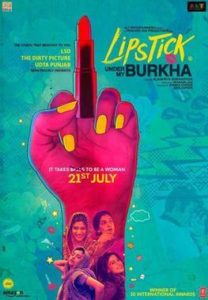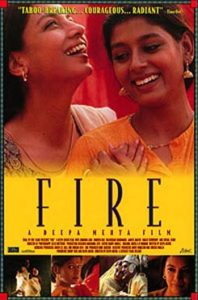Co-created by Ashni Acharya and Kartik Sundar
In the face of a rapidly expanding call for swaraj during the 1900s, the British Raj heavily censored the then still nascent Indian cinema. They feared this new medium had the potential for the widespread dissemination of nationalistic sentiments and communal dissent.
Today, independent India’s Central Board of Film Certification (CBFC) concerns itself with modifying or banning films that could jeopardize the security, morality, and sovereignty of the nation. Studying the pattern of CBFC judgements, we find that its judging criteria entirely overlaps with the preferred discourse of the incumbent governments at the time. It would seem that independent India’s censorship track record has facilitated not public interest but the agenda of the political elite.
Censor Raj
When cinema came to India, it found an audience that was already accustomed to art as an expression of nationalism. Nationalist poetry and songs had always been essential tools of public engagement during the struggle. Thus, the British were not unfounded in their fears of film being used as a medium to disseminate the principles of the independence movement.
To reign in the cinema industry, the Imperial Legislative Council decided upon restrictive regulations in as early as 1917. They introduced The Cinematograph Act of 1918, which would serve as the foundation of Indian film censorship. Broadly, it set age restrictions on viewership and gave the Raj the power to suspend the exhibition of films that it deemed “likely to cause a breach of the peace”.
Let’s consider the Tamil film Thyaga Bhoomi. Based on the life of Mahatma Gandhi, the 1939 production glorified his ideals of swaraj. For its association with India’s leading freedom fighter and obvious nationalistic narrative, the Governor of Madras slapped it with a nationwide ban 5 months after a successful release. This pattern of silencing anti-establishment films continued till the Raj lost power.
Censor Sarkaar
Post-independence, the Congress Government repealed the 1918 Act and immediately replaced it with The Cinematograph Act of 1952. This established the Central Board of Film Censors (later ‘Certification’) and remains the legitimizer of Indian film censorship today. The CBFC must also function in accordance with the Cinematograph (Certification) Rules of 1983.
The CBFC has been dictating the fate of Indian cinema for 67 years. In principle, the Board’s guidelines target matters that are:
“against the interest of the sovereignty and integrity of India, the security of the State, friendly relations with foreign States, public order, decency or involves defamation or contempt of court or is likely to incite the commission of any offence”
While the Raj’s institutions may have unabashedly aimed to crush anti-government sentiments, our 70-year old democracy must not have a similar legacy. Yet shamefully, the autonomy of our institutions has comes under question.
Consider this: The Board succumbed to threats from the Shiv Sena in 1996 and decertified Fire – a film based on Ismat Chughtai’s short story on homosexuality called ‘Lihaaf’. Yet, it routinely certifies films such as Phata Poster Nikla Hero with lyrics such as “tera peechha karoon toh tokneka nahi” [if I stalk you, you shouldn’t reprimand me]
Here and routinely, the CBFC’s priorities seem skewed – why is consensual intimacy more offensive than blatant sexual harassment? It is morally reprehensible to bolster stigmas against homosexuality while encouraging stalking as entertainment. And it is worse to do so at the violent behest of the political elite.
Jiski Laathi Uska Board
Evidence of the argument that the CBFC has been politicised can be found in the party affiliations of its Chairpersons over the years.
Former Chairperson Pahlaj Nihalani is a vocal supporter of the Bharatiya Janata Party (BJP) and Rashtriya Swayamsevak Sangh (RSS), calling Prime Minister Narendra Modi his “action hero”. There is nothing inherently wrong with this. Power is concentrated on party lines in a parliamentary system, and it is not surprising that such positions are delegated to those loyal to the PM and his organisation.
With the blessings of Mahadev and Desh ki Janta Janardhan, celebrating the thumping Victory of @BJP4India. Har Ghar Modi… Ghar Ghar Modi… @narendramodi @AmitShah @arunjaitley pic.twitter.com/tEfOYg9lnJ
— Pahlaj Nihalani (@NihalaniPahlaj) December 18, 2017
Had Nihalani assured the public that he could separate his Chairpersonship and BJP affiliation, we would not have had grounds to criticise him. But proving otherwise, he skirted around answering an interviewer about whether his politics affected the autonomy of the CBFC and defended his involvement in the creation of a campaign song for Modi.
Nihalani has made statements against the exhibition of PK and of films featuring former adult-film star Sunny Leone. His Board came under fire for censoring cuss words, ‘Bombay’ and ‘intercourse’, decertifying the film Unfreedom for portraying homosexual relationships that could encourage an “unnatural passion”, and refusing to certify Lipstick Under My Burka for being too “lady-oriented”. This last film was eventually released after a successful appeal to the Film Certification Appellate Tribunal, with the compromise of a few cuts.
These examples of excessive moral policing are in tandem with reactionary Hindu conservatism. Anti-LGBT sentiments, the erasure of women from political discourse, suppression of sexuality, and an irritable protectiveness of Hindu sanctity – these principles are reflected in the BJP and RSS’s’ actions and consequently in Nihalani’s judgements.
Left Right Left
The BJP cannot be singled out for placing its own rooks in key positions of authority. Nihalani’s predecessor Leela Samson has close personal ties with the Nehru-Gandhi family, which has cast suspicion on her appointment to multiple key positions during the reign of the Congress-led United Progressive Alliance (UPA).
Criticism against Samson as Chairperson was that which is regularly accrued to the Congress – pandering to minority whims. Her Board asked the makers of 2014’s Entertainment to rename the comical character ‘Abdullah’ to ‘Habibullah’, owing to the sacrality of the former name. It also made cuts to Kamaal Dhamaal Malamaal at the behest of protesting Christian groups that deemed the film’s portrayal of the clergy offensive.
However small, the modifications to these films are a testimony to a pervasive trend in Indian politics – the tendency of the Government to curb benign but essential freedom of expression in the name of religious sensitivity. Such decisions are made to avoid losing popularity amongst the relevant religious vote banks.
This brings us back to the question of the CBFC’s loyalties. Where then does the Board’s allegiance lie: with the people’s interests, as it should be, or with whichever vote bank the incumbent government wishes to appease?
The Sequel
Nihalani was replaced in 2017 by Bollywood poet Prasoon Joshi, whose ties to the BJP are hardly discreet. His organisation McCann Erickson has been aiding BJP’s Public Relations since the time of Atal Bihari Vajpayee. He wrote the anthem Saugandh for Modi’s 2014 campaign and was awarded a Padma Shri by this Government in 2015.
Joshi’s Board doesn’t seem to be breaking any CBFC trends. It failed to stand up against the violent threats issued by the Shri Rajput Karni Sena against the Padmaavati team. The Sena had been vandalising sets and theatres since before the film’s completion, and a BJP official even offered ₹10 Crore for the director and actor’s heads. The Supreme Court rightly ruled that banning the film from exhibition would amount to stifling freedom of expression. Yet, under pressure, the Board ordered the title to be changed to ‘Padmaavat’ and for Deepika Padukone’s blouse to be lengthened.
The objections to Padukone’s attire for offending the dignity of Rajput women are on shaky grounds. There is little evidence of the very existence of the queen upon whom the film is based, let alone the length of her blouse. Besides, the Board doesn’t deem it obscene when films feature women in short blouses dancing before hordes of lecherous men.
Historical context aside, the Karni Sena’s riots threatened the security of several hundred citizens of all ages, and the CBFC rewarded them by meeting their regressive demands. In the case of Padmaavati, Joshi and his Board privileged violent religious sensitivities over logic and freedom of speech.
The trend has been set and thus far, Joshi seems to be adhering to tradition. Whether the British Raj, the UPA, or the BJP is in power, India’s films have been filtered not through the people’s interests but through the survival strategies of the politically powerful.
Fortunately, the CBFC can and has been overruled. As mentioned above, the Judiciary has upon several occasions brought justice to the public against excessive censorship. In 2003, the Bombay High Court ordered the release of Anand Patwardhan’s War and Peace. The documentary on Indian and Pakistani nuclear tests was certified without any modifications – a clear signal to the CBFC that this industry would not take unreasonable arbitrations lying down.
But until our films can be certified by a body independent of the Executive, the system will ensure that Indians’ freedom of expression is, for the most part, at the whims of the ruling party.









Sarfaroshi ki tamanna ab hamare dil me hai | National Poetry | Click here for more